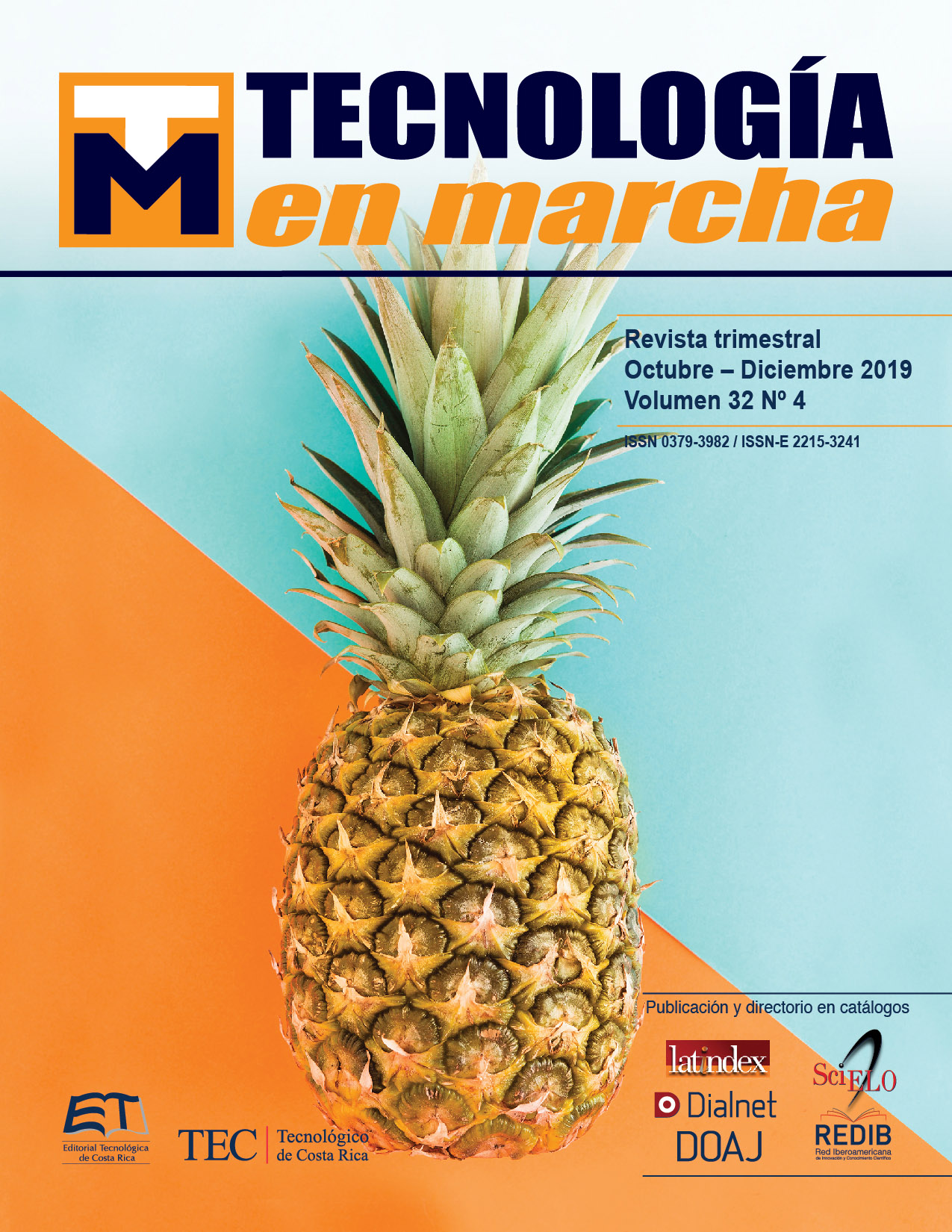Evaluation of Dynamic Bayesians Networks for predicting the progress of the Black Sigatoka and the productivity in crops
Main Article Content
Abstract
The Probabilistic Graphical Models (PGM) use a representation based on graphs to encode complex distributions in high dimensional spaces compactly. One type of PGM are the Dynamic Bayesian Networks (DBN) characterized for being a stationary and homogeneous system, allowing to represent huge amount of information of multiple variables in a compact way.
In this paper the prediction capacity of the DBN on the evolution of the Black Sigatoka and the crops productivity, using the data from CORBANA is studied. This data contains historical information of the weather and of two phenomena: the evolution of the Black Sigatoka and the productivity of the crops. The prediction capacity of the DBN was compare with the Bayesian Networks (BN).
A DBN and a BN were design and implemented representing the variables found on the data and their relations. Using them different experiments were done to determine the influence of the factors on their capacity of prediction. The obtained results on the experiments showed that the prediction capacity of the DBNs is not better that the prediction capacity of the BN using the data from CORBANA. In fact, there was not a significant difference when the network was changed. Although the DBN presented several theoretical advantages in comparison with other PGMs, in practice they were not observed. This happened because of the limitations of the available implementation of framework for using PGMs, making the DBNs not as attractive.
Article Details
Los autores conservan los derechos de autor y ceden a la revista el derecho de la primera publicación y pueda editarlo, reproducirlo, distribuirlo, exhibirlo y comunicarlo en el país y en el extranjero mediante medios impresos y electrónicos. Asimismo, asumen el compromiso sobre cualquier litigio o reclamación relacionada con derechos de propiedad intelectual, exonerando de responsabilidad a la Editorial Tecnológica de Costa Rica. Además, se establece que los autores pueden realizar otros acuerdos contractuales independientes y adicionales para la distribución no exclusiva de la versión del artículo publicado en esta revista (p. ej., incluirlo en un repositorio institucional o publicarlo en un libro) siempre que indiquen claramente que el trabajo se publicó por primera vez en esta revista.
References
[2] CORBANA. (Mayo de 2017). Corporación Nacional Bananera. Obtenido de https://www.corbana.co.cr/categories/quienes-somos
[3] S. J. Russell y P. Norvig, Artificial intelligence: a modern approach. Malaysia; Pearson Ed-ucation Limited, 2016.
[4] Y. Zhu, D. Liu, G. Chen, H. Jia, y H. Yu, «Mathematical modeling for active and dynamic diagnosis of crop diseases based on Bayesian networks and incremental learning», Math. Comput. Model., vol. 58, n.o 3-4, pp. 514–523, 2013.
[5] M. I. K. C. D. Buckeridge, «Using Dynamic Bayesian Networks for Incorporating Non-Traditional Data Sources in Public Health Surveillance», 2014.
[6] A. Akutekwe, H. Seker, y S. Iliya, «An optimized hybrid dynamic Bayesian network ap-proach using differential evolution algorithm for the diagnosis of Hepatocellular Carci-noma», en 2014 IEEE 6th International Conference on Adaptive Science & Technology (ICAST), 2014, pp. 1–6.
[7] N. Baba et al., «Continuous Dynamic Bayesian Network for gene regulatory network modelling», en 2014 International Conference on Computational Science and Technology (ICCST), 2014, pp. 1–5.
[8] D. Marim Vargas y R. Romero Calderon, «El combate de la Sigatoka negra», San José Costa Rica CORBANA Dep. Investig., 1990.
[9] M. Paluszewski y T. Hamelryck, «Mocapy++-A toolkit for inference and learning in dy-namic Bayesian networks», BMC Bioinformatics, vol. 11, n.o 1, p. 126, 2010.
[10] Cabot, C., Ulrich, J., & Raugas, M. (Febrero de 2012). LibPGM: Probabilistic Graphical models on Python. Obtenido de pythonhosted.org: http://pythonhosted.org/libpgm/#documentation/
[11] Norsys Corporation. (1995). Netica Application. Obtenido de www.norsys.com: https://www.norsys.com/netica.html
[12] K. Murphy, «The bayes net toolbox for matlab», Comput. Sci. Stat., vol. 33, n.o 2, pp. 1024–1034, 2001.
[13] K. R. Karkera, Building probabilistic graphical models with Python. Packt Publishing Ltd, 2014.
[14] R Core Team. (Mayo de 2017). Obtenido de R: A Language and Environment for Statistical Computing: https://www.R-project.org/

